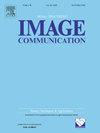文本-视频跨模态检索的视频和文本语义中心对齐
IF 2.7
3区 工程技术
Q2 ENGINEERING, ELECTRICAL & ELECTRONIC
引用次数: 0
摘要
随着互联网上视频的激增,用户对检索技术的精度和效率提出了更高的要求。目前的跨模态检索技术主要存在以下问题:首先,视频和文本之间没有对相同的语义对象进行有效的对齐。其次,现有的神经网络在建立视频的时间特征时破坏了视频的空间特征。最后,文本局部特征的提取和处理过于复杂,增加了网络的复杂度。针对存在的问题,我们提出了一种文本-视频语义中心对齐网络。首先,构建语义中心对齐模块,促进同一对象在不同模态上的语义特征对齐;其次,设计了基于残差结构的预训练BERT,在推断时间信息时保护空间信息;最后,利用“jieba”库提取文本的局部关键信息,从而简化了局部特征提取的复杂度。在MSVD、MSR-VTT和DiDeMo数据集上评估了网络结构的有效性。本文章由计算机程序翻译,如有差异,请以英文原文为准。
Video and text semantic center alignment for text-video cross-modal retrieval
With the proliferation of video on the Internet, users demand higher precision and efficiency of retrieval technology. The current cross-modal retrieval technology mainly has the following problems: firstly, there is no effective alignment of the same semantic objects between video and text. Secondly, the existing neural networks destroy the spatial features of the video when establishing the temporal features of the video. Finally, the extraction and processing of the text’s local features are too complex, which increases the network complexity. To address the existing problems, we proposed a text-video semantic center alignment network. First, a semantic center alignment module was constructed to promote the alignment of semantic features of the same object across different modalities. Second, a pre-trained BERT based on a residual structure was designed to protect spatial information when inferring temporal information. Finally, the “jieba” library was employed to extract the local key information of the text, thereby simplifying the complexity of local feature extraction. The effectiveness of the network structure was evaluated on the MSVD, MSR-VTT, and DiDeMo datasets.
求助全文
通过发布文献求助,成功后即可免费获取论文全文。
去求助
来源期刊

Signal Processing-Image Communication
工程技术-工程:电子与电气
CiteScore
8.40
自引率
2.90%
发文量
138
审稿时长
5.2 months
期刊介绍:
Signal Processing: Image Communication is an international journal for the development of the theory and practice of image communication. Its primary objectives are the following:
To present a forum for the advancement of theory and practice of image communication.
To stimulate cross-fertilization between areas similar in nature which have traditionally been separated, for example, various aspects of visual communications and information systems.
To contribute to a rapid information exchange between the industrial and academic environments.
The editorial policy and the technical content of the journal are the responsibility of the Editor-in-Chief, the Area Editors and the Advisory Editors. The Journal is self-supporting from subscription income and contains a minimum amount of advertisements. Advertisements are subject to the prior approval of the Editor-in-Chief. The journal welcomes contributions from every country in the world.
Signal Processing: Image Communication publishes articles relating to aspects of the design, implementation and use of image communication systems. The journal features original research work, tutorial and review articles, and accounts of practical developments.
Subjects of interest include image/video coding, 3D video representations and compression, 3D graphics and animation compression, HDTV and 3DTV systems, video adaptation, video over IP, peer-to-peer video networking, interactive visual communication, multi-user video conferencing, wireless video broadcasting and communication, visual surveillance, 2D and 3D image/video quality measures, pre/post processing, video restoration and super-resolution, multi-camera video analysis, motion analysis, content-based image/video indexing and retrieval, face and gesture processing, video synthesis, 2D and 3D image/video acquisition and display technologies, architectures for image/video processing and communication.
 求助内容:
求助内容: 应助结果提醒方式:
应助结果提醒方式:


